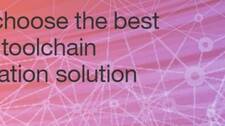Upgrade & Secure Your Future with DevOps, SRE, DevSecOps, MLOps!
We spend hours on Instagram and YouTube and waste money on coffee and fast food, but won’t spend 30 minutes a day learning skills to boost our careers.
Master in DevOps, SRE, DevSecOps & MLOps!
Learn from Guru Rajesh Kumar and double your salary in just one year.
Source – ibm.com
One of the biggest challenges around application development is the role of communication and transparency between teams. For a long time, different team—like developers, business analysts, QAs and operations—were independent. Companies sometimes suffered from the siloed approach that resulted. The results of this scenario were longer app delivery cycles, less innovative products and a slower response to market needs.
Trying to overcome those problems, the DevOps approach presents many practices and methodologies to bring teams closer and avoid silos. When we talk about DevOps, it is very common to hear about practices like scaled agile framework (SAFe), continuous deployment, continuous delivery, continuous testing and many others. All those practices are aimed at the improving application delivery efficiency, reducing risk and breaking down IT response barriers.
But practices need tools to support them, because automation and standardization also play a big and important role in DevOps.
Tools to achieve DevOps success
Many different tools can be used to adopt DevOps. The quality assurance (QA) team will use one that fits their needs, and the business analysts will use another one. How will companies manage communication and keep the transparency between teams if each one of them works with a different toolset?
Looking at this problem, you can create high-level tools to orchestrate the application lifecycle among the teams. The solution that controls the tools used in a DevOps environment is often called a DevOps toolchain orchestration solution.
Consider the following pointers before choosing the best solution to orchestrate a DevOps app delivery pipeline. We will discuss some of them:
Different teams have different needs: We put all teams together, and now? Working together does not mean that all the teams need the same information. A QA team will probably need an easy access to apps changes and bugs, but probably the operation team will want to know about the app’s health. It is important to keep what each team needs in mind when adopting a DevOps toolchain orchestration solution and how the solution differentiates them.
Communication and transparency
Good communication improves the collaboration level between teams. High levels of transparency significantly reduces the costs and waste through the app delivery. The risk of using many different tools will be the problems integrating them. Solving those problems create noise and need to be one of the most important features of a DevOps toolchain orchestration solution.
Security can be never forgotten
Besides your team’s needs, it is important to remember that different teams frequently have different ways to access to project information. Therefore, the DevOps toolchain orchestration solution needs to provide independent access controls, clearly defined by role.
As simple as possible
DevOps toolchain orchestration solutions are high-level solutions. They were created to control all application delivery following DevOps principles. In many cases, it will be a waste to keep more than one solution, because they will probably conflict with each other (not working properly) and have many overlapping features.
The DevOps movement is an important and needed direction for all companies that aim to deliver innovative products and achieve great time-to-market. But we all need to pay attention to how practices and tools used in this adoption relate to each other. Good decisions about the DevOps toolchain orchestration solution are crucial to improving application delivery and breaking down IT barriers.

 Starting: 1st of Every Month
Starting: 1st of Every Month  +91 8409492687 |
+91 8409492687 |  Contact@DevOpsSchool.com
Contact@DevOpsSchool.com